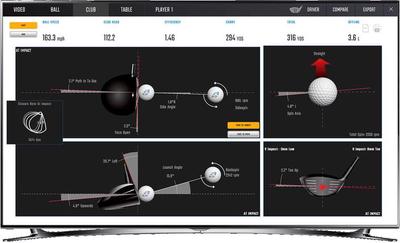Analyzing Golf Launch Monitor Data in R 🏌 📉 ⛳

Table of Contents
Introduction
What kind of golfer are you? Are you the “grip it and rip it” type? Or are you more the strokes gained tracking, DECADE following, “turn the volume up when Phil Mickelson starts talking theta waves” type looking to squeeze every inch out of your game? If you fall more into the latter camp and want to get to learn how to analyze your patterns and optimize your own game, stick around.
A little background on myself. I’m the director of a data science team at a Silicon Valley tech company. In my day-to-day I tackle large organizational data challenges, so it’s rare that I get hands-on time to build things in R.
I also happen to have recently fallen back in love with the game of golf for the first time since I played in high school. For the past 9 months, I’ve been on a mission to see how far I can take my game. I envisioned this project as a way to keep my data skills sharp while (potentially) making me a better golfer.
My hope is that others will find the approach and insights interesting and applicable to their own games, and ultimately I’d love it if others begin to ask questions and find ways to contribute their own curiosity and expertise.
Before beginning, just one caveat — I am not an expert — at any of this. Errors, mistakes, misunderstandings are my own. If I get something wrong, or you have a better way to do or explain something, let me know! It’s the only way to learn. You can email me at michaeldavidhutchinson@gmail.com.
You Will Learn How to…
- Take charge of your data by creating custom launch monitor reports
- Extract, Load, and Transform that Data in R (aka ELT/ETL)
- Explore, Analyze, and Visualize your shot patterns (aka Exploratory Data Analysis / EDA)
- Apply Strokes Gained data to your shot patterns to make better strategic decisions - COMING SOON!
Tutorials in this Program
Getting Launch Monitor Data into R
What this tutorial covers As an analyst or data scientist, one thing they don’t tell you in school is how much time you’ll spend accessing, scraping, extracting, wrangling, munging, cleaning, transforming, shaping, prepping, and a hundred other verbs that all essentially mean “get the data into a form that allows us to cleanly analyze, visualize, or model.
Python basics
Build a foundation in Python.
Visualization
Learn how to visualize data with Plotly.
Statistics
Introduction to statistics for data science.
About the Author
Michael D. HutchinsonFAQs
Are there prerequisites?
There are no prerequisites, though you’ll have more fun if you understand some basic R. If you’re new, I highly recommend taking an online course like this one offered by Datacamp.
That said, these tutorials have been designed in a way that should allow you to run code without modification. You can also just skip the code altogether and stay for the analysis.